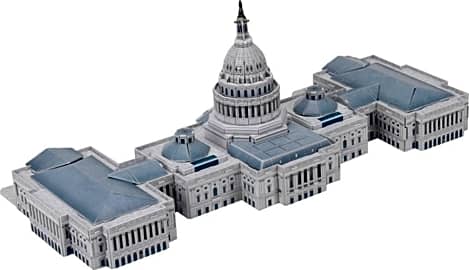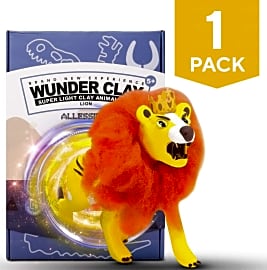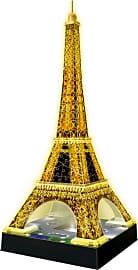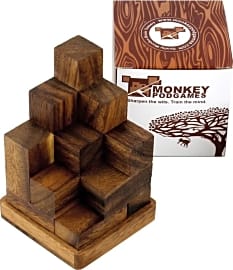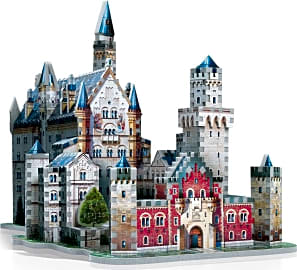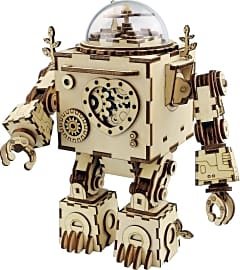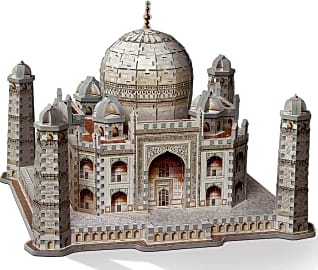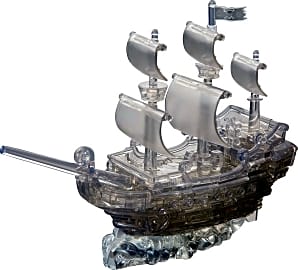The 10 Best 3D Puzzles

This wiki has been updated 36 times since it was first published in September of 2015. If you are looking for an activity for your family that doesn't involve vegging in front of the TV or sitting hunched over a smartphone, try one of these 3D puzzles. They will take your problem-solving skills into a new dimension, and produce stunning models that will give you a great sense of accomplishment once completed, and make unique decorations, too. They are perfect for rainy days. When users buy our independently chosen editorial picks, we may earn commissions to help fund the Wiki.
Editor's Notes
July 21, 2020:
In order to engage puzzlers of all ages and abilities, we've opted to keep puzzles that range in difficulty from beginner to advanced. On the easier side, The Earth by Ravensburger remains a popular choice. It has numbered pieces, so putting it together is as easy as following the arrows and counting. The Ravensburger Eiffel Tower is also on the simpler side, and as a bonus, it lights up when complete.
For more of a challenge, look to the Wrebbit Neuschwanstein Castle or the Wrebbit Taj Mahal. They both have nearly 1,000 pieces, so you can expect to spend some time putting them together. Unfortunately, though, they don't have clear, explicit diagrams, so if you get stuck, you're pretty much on your own. The Ukrainian Bridge Mechanical Safe and the Robotime Orpheus also make great challenges, and have the benefit of being functional items when complete. This is also true of the Allessimo WunderClay Lion, a new addition that makes a fun model toy. It does require an artistic touch, though, to shape the clay. Those who already have experience working with clay, and clay sculpting tools at home, will probably get the most out of this one.
May 20, 2019:
If you've become bored with traditional puzzles, then it's time to give one of these 3D options a try. They are often more challenging than the 2D versions and make a very cool display piece after you are finished assembling them. We wanted to make sure there was a nice variety in difficulty levels, which is why you can find the 950-piece Wrebbit Taj Mahal, as well as the 216-piece Ravensburger Eiffel Tower. This ensures your whole family can get in on the fun. Options like the Ukrainian Bridge Mechanical Safe and Robotime Orpheus are cool because in addition to being display pieces, they are also functioning items, a locking safe in the case of the former and a music box in the case of the latter. Puzzles can also be used as educational tools. For example, The Earth by Ravensburger is a great way to teach children about world geography, and the CubicFun Capitol Hill can prompt conversations on U.S. history. We feel the Monkey Pod Soma Cube deserves special mention because it is a fun brain teaser that plays more like a game than a traditional puzzle, and it provides a ton of replay value.
Special Honors
Magic Jigsaw Puzzles App It's hard to carry a 3D puzzle along with you for on-the-go fun, but you can still enjoy puzzling while you're out and about with the Magic Jigsaw Puzzles App. You'll never have to worry about losing pieces, and you can even turn your own photos into puzzles and share them with friends and family. magicpuzzles.net
Rising to the Challenge: Choosing a 3D Puzzle
This thought process alone will greatly narrow the scope of your search.
Puzzles have been popular for hundreds of years in one form or another, with early examples of entertaining mental challenges found among ancient civilizations including the Phoenicians, Egyptians, Chinese, and Greeks, to name but a few. The jigsaw puzzle as it is recognized in its modern form was first created in 1760 by a British man named John Spilsbury. These puzzles gained in popularity during the 19th century, and remain a favorite activity for millions of people of all ages.
Jigsaw puzzles can vary in degree of difficulty from a simplicity suitable for toddlers to a complexity that challenges even the sharpest adult's intellect and patience. Many depict easily identifiable images, such as the rendering of a map, the reproduction of a work of art, or a print of a photograph; others add to the challenge by featuring less clearly-identified graphics or patterns. What all jigsaw puzzles have in common, though, is that they are two-dimensional.
Three-dimensional puzzles, on the other hand, spread out laterally and vertically, adding a whole new level of complexity to the construction process, but also adding excitement and opportunity a flat puzzle could never muster. For while at best a 2D jigsaw puzzle can faithfully recreate an image of another object, a 3D puzzle can create a physical verisimilitude of almost anything, from a city to a statue to a solar system.
As with standard puzzles, choosing the "right" 3D puzzle first means knowing for whom you are making the purchase and weighing their interests and abilities. (Yes, consider yourself in that manner if shopping for yourself.)
A few things to keep in mind: a puzzle that's too easy is only a bit more enjoyable than a puzzle that's too challenging, which is to say very little fun at all. And even an age- and ability-appropriate puzzle that's subject matter is of no interest to its recipient is likewise a poor choice.
When choosing a 3D puzzle, first consider the age, mental acuity, and attention-span of the person or people likely to work on it. This thought process alone will greatly narrow the scope of your search. Next consider the interests of said individuals. Many three-dimensional puzzles see their users creating famous buildings, landmarks, or whole cities, while others involve non-representational objects and instead challenge the builder to complete a cube, sphere, or other shape using the included pieces with care and precision.
Finally, consider whether you or the puzzle's intended audience prefer something that can be readily deconstructed for repeat enjoyment (or simply to be put away) or prefer a set that, once assembled, will essentially become a piece of art. Many 3D puzzles do not lend themselves to repeat use but do make wonderful decorations once completed, so don't overlook the aesthetics of a finished set when considering the purchase.
3D Puzzles As Classroom Accessories
The same parts of the brain that are stimulated by the challenges of assembling a 3D puzzle are those that are necessary for success in the all-important STEM fields. And a successful career in a STEM-related profession -- for reference, the acronym stands for Science, Technology, Engineering, Mathematics -- begins with a purpose-driven education, which is these days often referred to as STEAM learning. (Just add the word Arts into the base acronym.)
The same is true for studying planets and stars, parts of the anatomy, and so forth.
Unlike a two-dimensional puzzle that can, with enough time spent, be completed largely using a trial-and-error approach, a 3D puzzle allows little room for a basic process of elimination. Instead, it requires a clear conceptualization of the goal (the finished puzzle, in other words) and a deliberate step-by-step approach, with progress depending on the successful completion of each previous aspect. Many will quickly recognize a parallel there: the Scientific Method.
Not only can a great puzzle serve as a teaching tool in and of itself, but one can also be used as a component handy for exploring a wider subject matter. A student will obtain a much more complete grasp of world geography by physically assembling a 3D globe puzzle, for example, than by simply looking at a map. The same is true for studying planets and stars, parts of the anatomy, and so forth.
The right 3D puzzle will not only challenge the young mind on an individual level, but can also be used to help foster one of the greatest challenges an educator faces: proper fostering of collaborative work. Completing a puzzle in a group is often a greater challenge than simply working on the project alone, but it builds skills that are invaluable later on, both in one's professional and personal life.
The 3D Puzzle As Mental Exercise
Dozens of studies have confirmed beyond any reasonable doubt that the best way to stave off the degradation of mental sharpness and memory that often come with old age is to never stop challenging the brain. So too is keeping the mind challenged important during the recuperation after a surgery or during an illness regardless of age; a lack of intellectual stimulation must be avoided at any age.
If you plan to give a 3D puzzle as a gift with one of these purposes in mind, be ready for initial hesitance.
Myriad activities can foster the type of cerebral challenge that helps keep a mind limber, but few activities can keep both mind and body engaged at once like a puzzle can. A 3D puzzle is an ideal activity for a person with limited mobility as caused by age or infirmity, for it requires minimal strength yet nonetheless engages the body. They do require a degree of dexterity to complete, but a dearth in this area can usually be overcome through simple patience and dedication.
Precisely because a three-dimensional puzzle requires a greater degree fine motor control, these puzzles can also serve as great tools for physical rehabilitation following an accident or sickness that limits one's ability to properly control his or her hands. The best way to recover full control of and strength in the fingers, hands, and arms is to use these body parts frequently.
While initially working on an ostensibly complicated puzzle might be challenging and frustrating for many people, the improvement they can bring in terms of intellectual resilience and physical dexterity more than warrant persistence. If you plan to give a 3D puzzle as a gift with one of these purposes in mind, be ready for initial hesitance. (And keep in mind that a shared puzzle making experience is always an option.)


